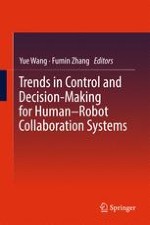
2017 | OriginalPaper | Buchkapitel
1. Introduction
verfasst von : Yue Wang, Fumin Zhang
Erschienen in: Trends in Control and Decision-Making for Human–Robot Collaboration Systems
Aktivieren Sie unsere intelligente Suche, um passende Fachinhalte oder Patente zu finden.
Wählen Sie Textabschnitte aus um mit Künstlicher Intelligenz passenden Patente zu finden. powered by
Markieren Sie Textabschnitte, um KI-gestützt weitere passende Inhalte zu finden. powered by